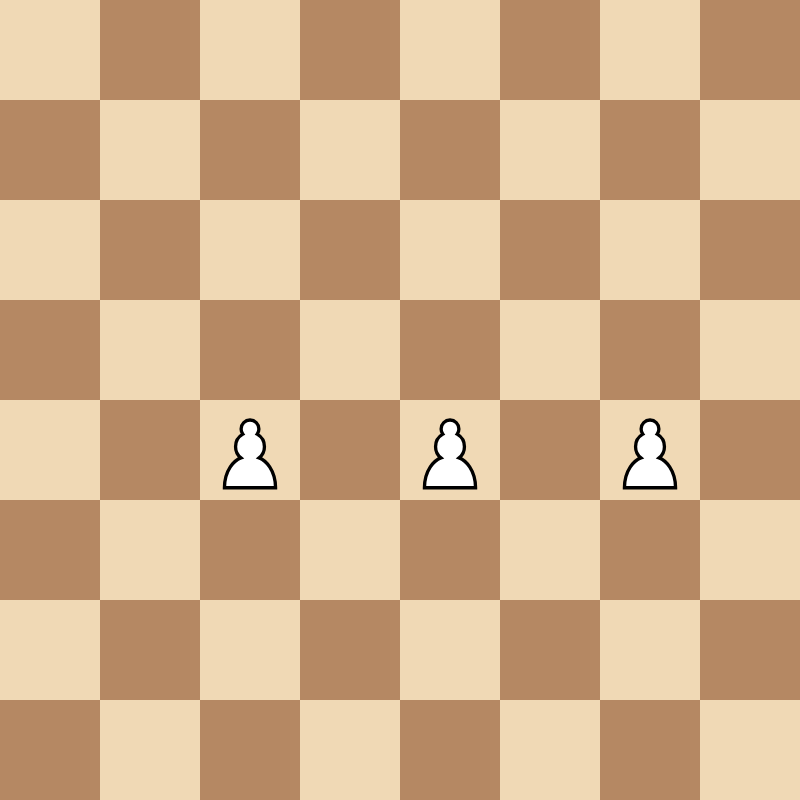Isolated pawns are pawns that have no friendly pawns on adjacent files (the files next to them). They are often considered weaknesses in a position because they can be more easily attacked and are harder to defend. However, in some cases, they can also be a dynamic strength, as they grant the player open files and lines of attack.
Disadvantages
- Weaknesses: They are vulnerable to attacks because they cannot be defended by other pawns.
- Lack of Pawn Support: They lack support from adjacent pawns, making it difficult to create pawn chains and control important squares.
Advantages
- Potential for Counterplay: While they can be weaknesses, isolated pawns can also offer dynamic potential, such as open files for rooks and active play for pieces. However, be careful when purposefully giving yourself an isolated pawn, as all your opponent needs to do it trade down pieces and you’ll likely be worse in an endgame scenario.
Example 1:
This line of the Tarrasch Defense is a great example of the strengths and weaknesses of the isolated pawn. Here, it’s White to move, and after dxc4 Bxc4 cxe4 dxe4 Black ends up with an isolated central pawn. A very imbalanced game will occur, with White aiming to trade pieces with an advantageous endgame due to Black’s weak pawn, and Black going for dynamic play due to the open files onto White’s central king and extra space due to the IQP (Isolated Queen’s Pawn).
Example 2:
Take a look at this GM game in which Black follows the rule of trading down pieces, winning the advantageous endgame.
ChessGate
The author of this lesson has chosen to contribute anonymously.

